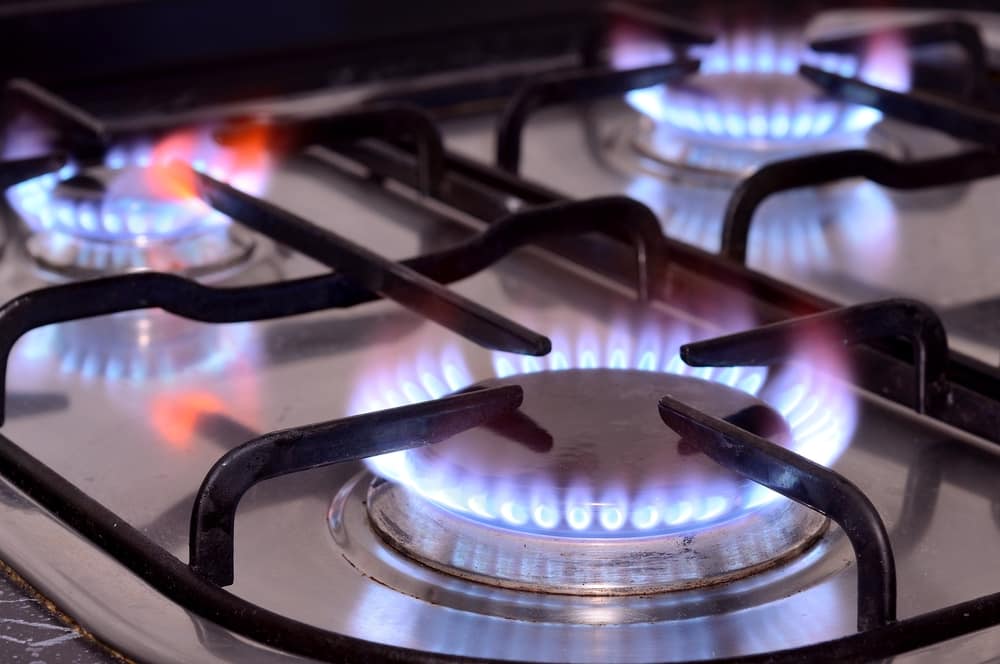
While the gas stove presents a better price point to the users, it can never match the operating efficiency and convenience of a gas hob. So, you should save up some budget and invest in a gas hob if you’re trying to buy a reliable unit for your kitchen. There are many high-value brands in the market, and you’ll surely find a unit that accurately matches your cooking requirements. You can further rely on expert opinion for a better purchase decision.
Recently many users have asked about the flame being low on their gas stove. If you’re also wondering why your gas stove flame is so low, then the following list of reasons will give you a better understanding of this issue.
Why Is My Gas Stove Flame So Low?
- Clogged Valves
Clogged valves in your gas stove are one of the primary reasons why you might be struggling to get the desired performance from your unit. If you don’t follow a proper maintenance cycle, then there is a good chance that you’ll be running into this issue at some point. So, to stay ahead of the problem, make sure to keep the unit clean and service the components after every few weeks. That way, you’ll have a much better cooking experience, and it will be effortless to maintain burner efficiency.
It is always better to rely on a professional when you’re dealing with clogged valves. Otherwise, you’ll spend hours trying to free up the valves without any progress. So, just call a local expert and have him unclog the gas valves if you’re not getting the desired flame strength.
On the other hand, if you’re experienced and know how to maneuver through the issue, then make use of the owner’s manual to free up the gas valves. Once the gas valves have been cleaned, the issue with the flame strength will be resolved.
- Alignment Problems
The burner cap on your gas stove can also get misaligned sometimes and lead to similar issues with your gas stove. So, if you’re in a situation where the flame strength is not up to the desired levels, then there is a good chance that you’re dealing with alignment issues. When this cap covers up the gas outlets, it has a negative impact on the gas supply. For this reason, it is best to check the alignment of the burner caps if you’re not getting enough flame from the stove.
The good thing here is that it is quite easy to maneuver through the alignment problems. All you need to do is lift up the burner cap and rotate them slightly to expose all holes. This will not only improve the strength of the flame, but you’ll also be able to get better heat distribution throughout the container.
All in all, you’re trying to maximize the gas outflow from the burner while also providing a steady flame to the stove. Relying on the owner’s manual will help you better manage the alignment of the burners.
- Clogged Burners Holes
Aside from the gas valves, burner holes can also get clogged from burnt food particles and debris. This issue can be avoided quite easily by following a quick cleaning cycle. So, if you clean the unit at the end of every other day, it is highly unlikely that you’ll have to deal with this problem. To further isolate the issue, you can turn down the flame and inspect the burner holes to see if they are clogged or not.
There is a good chance that you’ll find multiple clogged holes in your unit. After carefully inspecting all burner holes, you can use a toothpick or a piece of wire to remove all debris from the stove burner. Once all the debris has been removed from the burner holes, start the fire again, and it should have optimal strength.
All in all, these were a few reasons why you might be running into low flame issues with your gas stove. All of these issues can be avoided if you’re careful throughout the cleaning process and don’t mess up the alignment of the burner holes. So, make sure to service the gas stove occasionally, and you won’t have to deal with low flame problems again.